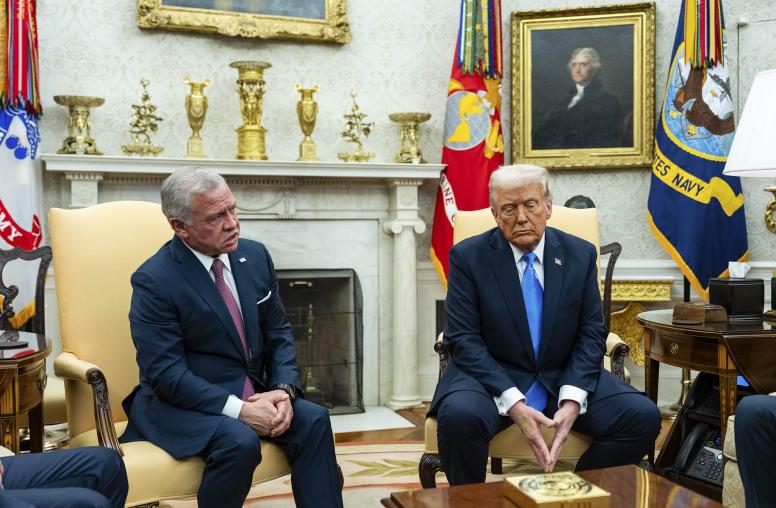The joint press conference held by President Trump and Palestinian President Mahmoud Abbas after their meeting this week was spare of specifics, but abundant in atmospherics. Both leaders seemed intent on conveying the message that this is the start of a new chapter, and that peace—and the U.S.-Palestinian partnership toward that goal—is possible.

For Trump, this was an opportunity to underscore his seriousness of purpose in pursuing “the toughest deal to make.” For the aging Abbas, it was an effort to affirm his renewed relevance to domestic, global and regional players.
But if the meeting projected a sense of possibility, it offered no concrete next steps. There was no suggestion of renewed talks, and given the psychological and substantive gaps between the parties, this is prudent.
Instead, Trump noted that the U.S. can support efforts by the parties to reach a deal, and provided a thematic list of priorities: an enhanced security partnership with the Palestinians, ongoing Israeli-Palestinian security coordination, a U.S. commitment to economic growth in the West Bank, and the fostering of an environment in which peace could thrive. These largely echo the areas of focus that emerged when former Secretary of State John Kerry took up the peace process in 2013, despite Trump’s efforts to distinguish himself from the previous administration.
Yet to achieve an alternative outcome, the administration will need to tie these efforts to a clear endgame, and generate tangible improvements on the ground that suggest meaningful progress toward peace rather than cosmetic adjustments. On politically unpopular security cooperation with Israel, in particular, it will be important that the Palestinians see a benefit to their own security, rule of law, and economic development.
It will be similarly important that an economic focus not be seen as a substitute for a political process. The administration is off to a good start on this score, with Trump’s remarks seeming to emphasize that economic steps will be just part of the efforts to move toward peace.
The elephant in the room, of course, is Gaza, which got no direct play in the public remarks, despite the less-than-subtle efforts of its de facto ruling power, Hamas, to remind Palestinians, the U.S., and the international community of its relevance in the lead up to this meeting. Abbas aimed to speak yesterday for all Palestinians, but progress toward peace will elude the most robust efforts if the issue of Gaza’s growing humanitarian crisis and Hamas control are not addressed at the outset. This will require coordination not only with Abbas, but also with Israel and other regional players.
Trump, who said this week that he wants to prove the peace skeptics wrong, may have a chance to address this when he heads to Israel and Saudi Arabia later this month. Trump will need to show he can leverage the regional dynamics and reset relationships to produce incremental coordinated actions by all sides in a way that neither overpromises nor underwhelms.



